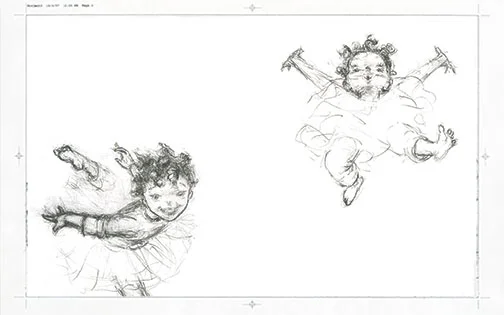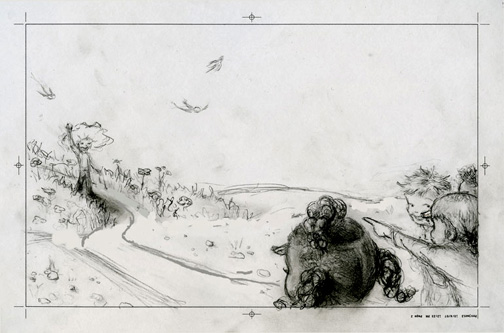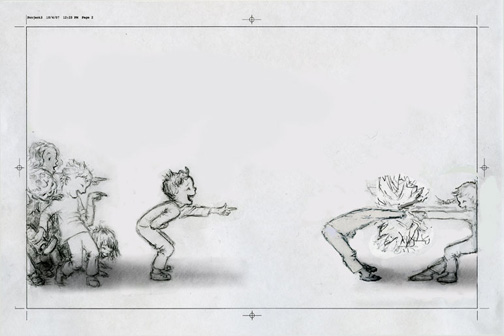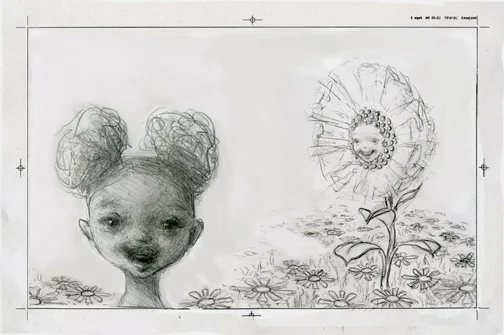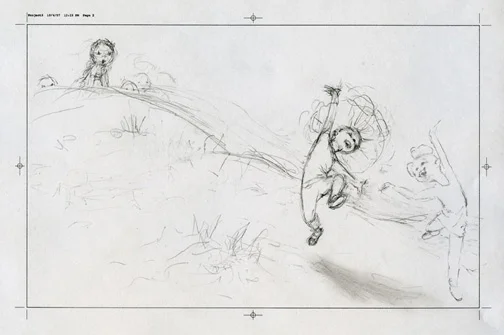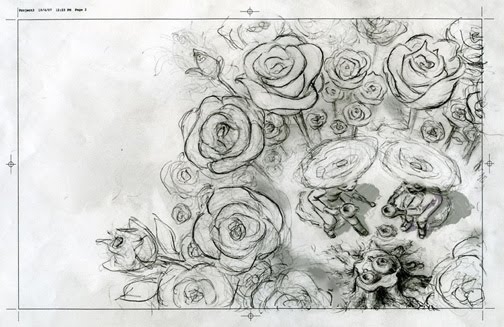PICTURE BOOK DUMMIEs
Picture book artists almost always create a dummy, or rough mock-up, before the finished book. I've used dummies to pitch books to editors and to my agent. I also use dummies and thumbnails to keep track of the book as a whole, and to see how various parts will fit in. (Note: most picture books are 32 pages long. Though the dummies below consist of 16 two-page spreads, that's not necessarily the norm. Often, a picture book story will start on the right-hand page, and end on the left.)
Here's an example of changes I made to the original dummy of JUST A DUCK. I added a pier to usher Cat more swiftly into deep water. Sorry, Cat!
A Dummy as Color Guide
While illustrating JUST A DUCK, I arranged pencil sketches from the original dummy, along with more finished spreads, into a grid of thumbnails on the computer. I then added rough color in areas, to figure out which colors and tones might work as I moved forward. Click to enlarge the images below: if you're familiar with the finished book, you can spot some of the differences here. Note that two spreads toward the end are almost the same. I had left them as placeholders at that point, and fine-tuned the compositions later. Some of the colors here are rough indeed: look at Cat climbing down the tree!
Sketching Out a First Book
Though I learn a lot with each new project, this was especially true with THE YELLOW TUTU (by Kirsten Bramsen), the first book I illustrated. Parts of the dummy below were rearranged on the computer. Click on the images to enlarge; you can see ragged edges where I moved things around. I always care more about exploration at this stage than about making pretty pictures. (Note: I've lost one of the sketches; the finished spread below is for continuity.)




